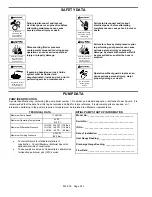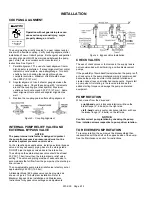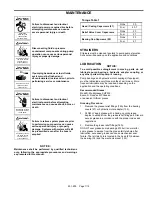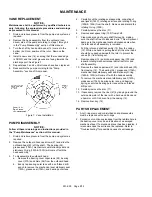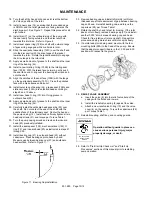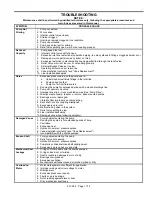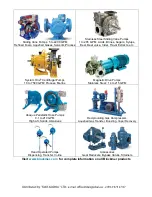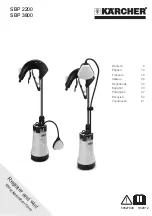
501-K00 Page 9/12
MAINTENANCE
PUMP ASSEMBLY
Before reassembling the pump, inspect all component parts
for wear or damage, and replace as required. Wash out the
bearing/seal recess of the head and remove any burrs or
nicks from the rotor and shaft. Remove any burrs from the
liner.
1. Install liner key (74) in casing (12).
2. Align the liner (41) keyway with the key (74) in the pump
casing (12) and start the liner into the casing. The word
“INTAKE” cast on the liner must face the intake port of
the pump casing.
3. Uniformly tap the outer edge of the liner with a rubber
mallet to fully insert into the casing.
4.
Reassemble the INBOARD (driven) side of the pump
first.
For a right-hand (clockwise) rotation pump, position the
pump case with the intake flange (2”, 8 bolts) to the right.
For a left-hand (counterclockwise) rotation pump,
position the pump case with the intake flange (2”, 8 bolts)
to the left.
5. Place the inboard disc (71) against the liner (41) on the
inboard side of pump with the seal cavity outward and
disc relief hole located as shown in Figure 8.
Figure 8. Disc Installation
6. Apply a light coat of grease to the grease seal journal in
the inboard head (20).
7. Install new small grease seal (104) into inboard head
(20). Flat side of grease seal must face outside of head,
with spring and lip side facing inside of head.
8. Install bearing spring (24C) in inboard head (20).
9. Install outer race of bearing (24) into bearing pocket in
inboard head (20).
10. Install grease seal (104A) into bearing pocket of head
with open side toward bearing and flat side facing
outward. Gently push or tap the grease seal until flat
face of grease seal is about 1/8
”
(4 mm) past the larger
diameter flat face in head. Refer to Figure 9.
Figure 9. Grease Seal Installation
Figure 10. Stationary Seat Installation
11. Place new stationary seat O-ring (153D) in groove of
stationary seat (153A).
12. Lubricate the stationary seat journal in the inboard head
(20) with a light coating of grease.
13. Align stationary seat (153A) into inboard head (20) with
raised face outward and location pin on opposite side
aligned with the anti-rotation slot in the head. Refer to
Figure 10.
14. Gently push stationary seat into head. Be careful not to
nick the raised face on the stationary seat. Clean the
polished face with a clean tissue and alcohol.
15. Without installing the head O-ring (72) or rotating
mechanical seal components, temporarily attach the
inboard head (20) to the casing (12). Install and hand-
tighten two head capscrews (21), 180 degrees apart.
16. Grease the inboard end of the shaft of the rotor and shaft
assembly (13).
17. Gently slide rotor and shaft assembly (13) into the casing
(12) and through the grease seals (104 & 104A) and
bearing (24) in the inboard head (20).


